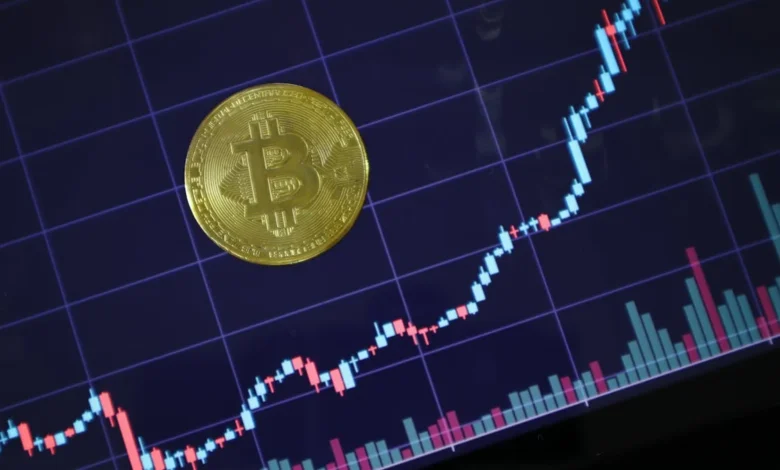
Bitcoin Nears $100,000: Market Corrections and Institutional Role
Bitcoin’s march toward the much-awaited Bitcoin Nears $100K milestone is not without times of sharp retracing as it continues to occupy centre stage in world financial markets. Although declining to the $100K range is more plausible, in line with natural market cycles, indications from the Futures Market suggest that any declines may be transient. As institutional participation increases, a developing derivatives market develops, and Bitcoin’s price behaviour is changing to more closely mimic conventional asset mechanics across a range.
Bitcoin’s Rise: Institutions and Nations
For both experts and investors, the $100,000 price point for Bitcoin has evolved into a psychological and technical benchmark. A confluence of events has driven Bitcoin’s positive momentum in 2024 and 2025, including rising acceptance from institutional investors, the development of Bitcoin spot ETFs, and increased demand from retail investors amid global macroeconomic uncertainty.

Notable financial companies, such as BlackRock and Fidelity, have not only included Bitcoin-related assets in their portfolios but also helped shape laws by advocating for more precise crypto regulations. Furthermore, sovereign interest in Bitcoin—shown by nations like El Salvador and possible talks in Argentina—has given the story long-term positive momentum as a counter to inflation and financial instability.
Bitcoin Price Correction Risks Amid Market Leverage
Notwithstanding the hope, various technical and structural market factors may cause a retracement to the $100,000 level. First, as traders and long-term holders seek realised gains following rapid price increases, large-scale profit-taking is inevitable. A brief drop is practically unavoidable when the market becomes overheated, particularly given the rising leverage in futures contracts.
This was clear when Bitcoin momentarily passed $110,000 and then turned back toward the $100,000 support zone as cascading liquidations in the futures market destroyed too heavily leveraged long investments. This behaviour reflects conventional financial markets, in which round numbers serve as both opposition and encouragement, typically triggering automated trading events.
Bitcoin Futures Market Correction Dynamics
Particularly on sites like CME, Binance Futures, and Bybit, the Bitcoin futures market serves a dual purpose in terms of market correction and price discovery. Open interest in futures typically surges as Bitcoin approaches $100,000, indicating increased speculative activity. This creates the conditions for a healthy market reset even while it raises the likelihood of liquidation cascades.
Usually, long positions prevail when an optimistic mood rules the futures market, and it hits a tipping point when it becomes too highly leveraged in one direction. A sharp price drop can cause large liquidations, therefore momentarily lowering the price. Such resets, however, eliminate excess system leverage, enabling a more sustainable ascent.
Typically, institutional investors who view $ 100,000 as a fair value entry point meet these transient declines with large volume purchases. With more support and less volatility, Bitcoin typically begins its upward trend as the market rebalances.
Institutional Impact on Bitcoin Trading
The role institutions play in Bitcoin’s new trading environment is among the dynamics least appreciated. Using advanced algorithms, market makers and large trading desks control risk around key thresholds, such as $ 100,000. Their objectives are primarily to preserve liquidity and minimise slippage, rather than necessarily driving prices higher.
Buy orders are therefore commonly triggered when prices start to decline below $100K, so providing a buffer that stops more panic selling. This is quite different from the early days of Bitcoin, when a lack of institutional participation meant that corrections sometimes descended into protracted bear markets.
Furthermore, the growing availability of options markets, particularly Bitcoin call and put contracts on exchanges like Deribit, is offering hedging instruments to alleviate market-wide concerns. Now that traders can guard against their downside risk, they are more confident in maintaining their holdings through transient volatility.
Bitcoin Adoption and Demand Driving Market Resilience
The sheer extent of Bitcoin Price adoption curve adds another factor that makes drops improbable to last long. Apart from institutional money, retail demand remains significant, particularly in nations undergoing currency devaluation. Major fintech companies like PayPal and Square are also incorporating Bitcoin into their payment and investment systems, thereby exposing millions of people worldwide.

Further integrating it into the digital economy includes the emergence of decentralised finance (DeFi) and the use of Bitcoin as collateral in lending platforms. These practical use cases generate demand that is less speculative and more basic, so each dip indicates not only a loss in value but also a buying possibility for an increasing number of consumers.
Final thoughts
Although a decline to $100,000 might be unsettling for more recent investors, it is a normal and even healthy shift within the larger positive framework of the Bitcoin market. These corrections are likely to be transient, given the sophistication of the futures market and the stabilising of institutional players.
Market resets will become more orderly and predictable as Bitcoin matures and behaves more like a significant asset. The part the futures market plays and using it strategically for entrance points can make all the difference for professional investors.







